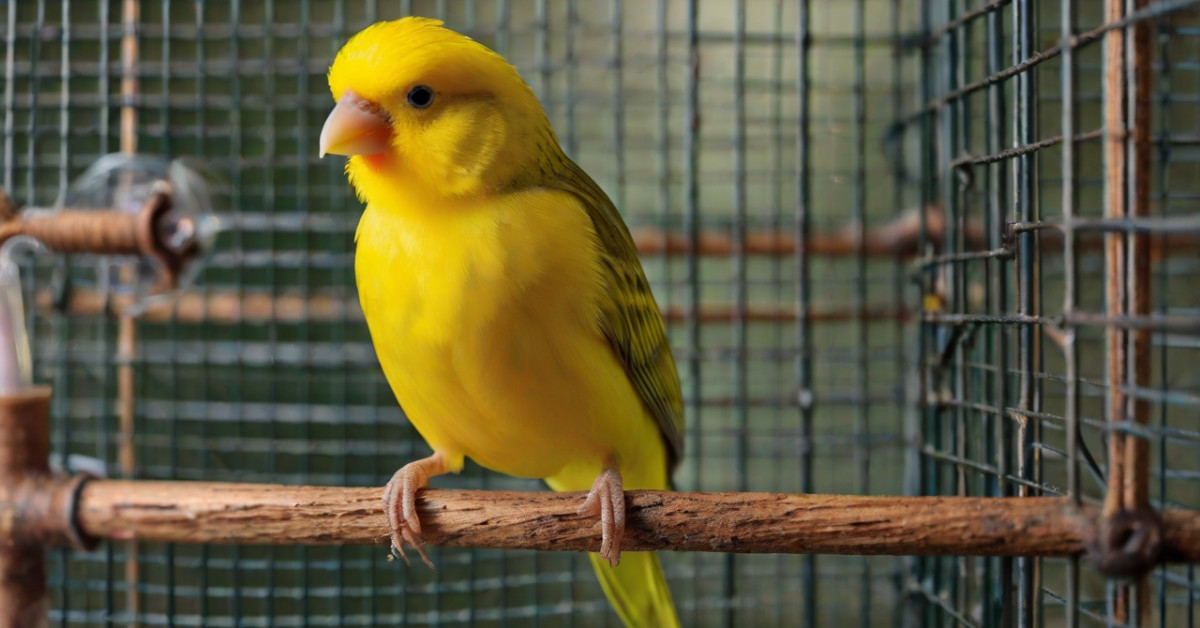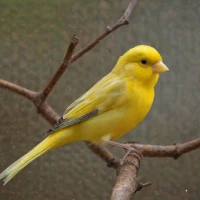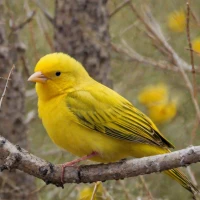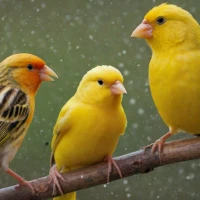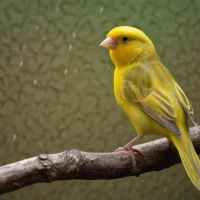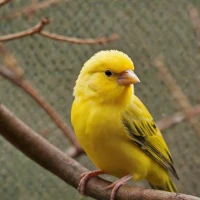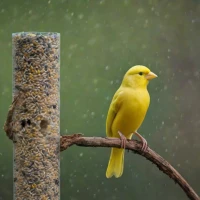Feathered Friends: Essential Accessories for Domestic Canaries
Oh, the sweet sound of a canary singing—it’s like nature’s very own melody! I remember my first canary, Sunny, who literally brightened my day with his cheerful chirps. So, how do we make our little feathered friends feel right at home? Let’s dive into the world of canary accessories and what you need to create the perfect space for these delightful songbirds.
The Perfect Cage: Size and Shape Matter!
When I brought Sunny home, I initially had no idea how crucial the cage size would be. Did you know that canaries need room to fly horizontally? Crazy, right? So, the wider the cage, the better. Choose a cage that’s at least 18 inches wide, 24 inches long, and 18 inches high. And, hey, no round cages; they can be really disorienting for our little pals.
Perches: The Difference Between Happy Feet and Sore Feet
One of the rookie mistakes I made was sticking with just the standard perches that came with the cage. I soon learned that canaries need variety. Provide materials like natural wood, rope, and even mineral perches to keep their little feet healthy and happy. Ever tried standing on the same spot all day? Not fun!
Toys and Enrichment: Keeping Boredom at Bay
Canaries aren’t just pretty singers; they’re thinkers too. I once underestimated how playful Sunny could be. Stock up on some swings, ladders, and mirrors—yes, birds love mirrors! A bored canary is an unhappy canary. Add a couple of puzzle toys to keep ’em mentally stimulated. Plus, let’s be real, watching them play is pure entertainment!
Bath Time Fun: Bathhouses and Misting
There’s something heartwarming about watching a canary splash about. Let me tell you, when Sunny first bathed, it was like watching a fluffy, yellow tornado. These birds love their baths, so make sure to provide a shallow dish or a special bathhouse attachment. Also, misting them gently can replicate the refreshing feel of a light rain shower.
Feeding Time: Food and Water Accessories
When it comes to feeding, canaries can be a bit particular. Invest in high-quality seed mixtures that include a variety of grains and seeds. Fresh fruits and veggies are a must, but avoid avocado (it’s toxic!). How about a cuttlebone? It’s fantastic for their calcium intake and beak health. Use stainless steel or ceramic dishes to keep things sanitary. Oh, and don’t forget a water bottle or a ceramic water dish; canaries need fresh water daily!
Nesting: Comfort and Safety
Even if you’re not planning to breed your canaries, it’s still a good idea to offer a cozy nesting option. You won’t believe how much they appreciate it. Opt for a covered nest, like a wicker basket with some natural fibers inside. It gives them a sense of security and a nice spot to rest.
Health Essentials: First-Aid and Medical Supplies
Just like us, our feathered friends can occasionally fall ill. Things like a small aviary first-aid kit with essentials like styptic powder, tweezers, and a magnifying glass can be invaluable. I also keep a list of avian vets handy. Prevention is better than cure, so regular health checks at home can make a huge difference.
Social Interaction: Multitasking with Multiple Canaries
Having more than one canary can spread the joy, but it comes with its own set of challenges. Introduce them properly to avoid any territorial issues. Remember, each bird is unique; some might get along famously, while others might prefer their solitude. When Sunny met my second canary, Luna, it was like a melodious duet from day one. But that’s not always the case.
Lighting and Environment: Natural and Artificial Light
Adequate sunlight is essential for canaries, promoting good health and vibrant plumage. If natural light is scarce, consider full-spectrum bird lighting. You won’t believe the difference it makes! Also, ensure the room temperature stays around 60-70°F, and avoid drafts.
Grooming Essentials: Nail and Beak Care
Trimming a canary’s nails might seem daunting, but it’s necessary. Get a good set of bird nail clippers and take it slow. If you’re uncomfortable, an avian vet can easily handle it. Cuttlebones and mineral blocks help with beak maintenance, avoiding overgrowth.
Cleaning Supplies: Hygiene Equals Health
Keeping the cage clean is vital. Use a bird-safe disinfectant—no harsh chemicals, please! Change the cage liner frequently and wash the food and water dishes daily. A clean cage = a happy, healthy canary. I’ve always found that a weekly deep clean works wonders.
Sensory Details: Sound, Smell, and Touch
Canaries are sensitive creatures. I remember one cold winter when I noticed Sunny starting to look a bit droopy. A quick fix with a thermal perch and—voila!—he was back to his chirpy self. Pay attention to their surroundings; harsh chemicals or loud noises can stress them out. Use gentle, unscented cleaners and keep their environment calm and nurturing.
Personal Reflections and Random Facts
Did you know that canaries were once used in coal mines to detect toxic gases? It’s wild how these tiny birds have played such crucial roles. When I look at Sunny, it’s hard to believe his ancestors did such life-saving work! Owning canaries teaches patience, love, and the joy of simple things—like a song that brightens your day.
In Closing: Crafting the Ideal Canary Haven
Overall, providing the right accessories for your canary ensures a happy, healthy, and active life for your little songster. Whether it’s the perfect perch or a fun toy, every detail adds to their well-being. Thanks for joining me on this journey through the essentials for canary care. You’re now equipped to make your canary’s life as melodious as their song. Until next time, keep chirping happily!
🏡🕊️ “Home is where the chirp is!” 🕊️🏡
